Frequent persons on Ireland-and-northern-ireland's street signs
countries
40 names / 211 streets
Queen Victoria
 18
Victoria was Queen of the United Kingdom of Great Britain and Ireland from 20 June 1837 until her death in 1901. Her reign of 63 years and 216 days—which was longer than those of any of her...
18
Victoria was Queen of the United Kingdom of Great Britain and Ireland from 20 June 1837 until her death in 1901. Her reign of 63 years and 216 days—which was longer than those of any of her...
Charles Stewart Parnell
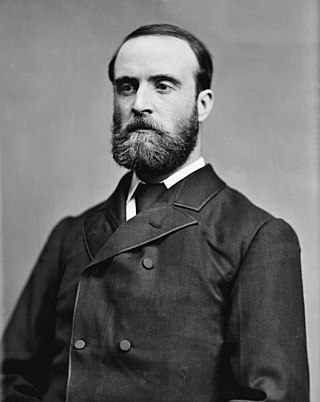 13
Charles Stewart Parnell was an Irish nationalist politician who served as a Member of Parliament (MP) in the United Kingdom from 1875 to 1891, Leader of the Home Rule League from 1880 to 1882, and...
13
Charles Stewart Parnell was an Irish nationalist politician who served as a Member of Parliament (MP) in the United Kingdom from 1875 to 1891, Leader of the Home Rule League from 1880 to 1882, and...
Lord Edward FitzGerald
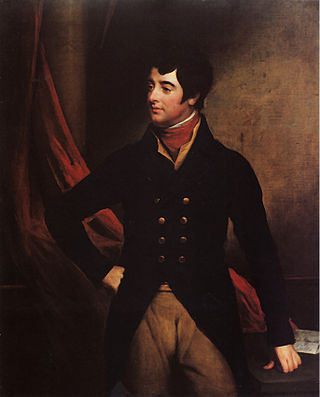 13
Lord Edward FitzGerald was an Irish aristocrat and nationalist. He abandoned his prospects as a distinguished veteran of British service in the American War of Independence, and as an Irish...
13
Lord Edward FitzGerald was an Irish aristocrat and nationalist. He abandoned his prospects as a distinguished veteran of British service in the American War of Independence, and as an Irish...
Saint Patrick
 12
Saint Patrick was a fifth-century Romano-British Christian missionary and bishop in Ireland. Known as the "Apostle of Ireland", he is the primary patron saint of Ireland, the other patron saints...
12
Saint Patrick was a fifth-century Romano-British Christian missionary and bishop in Ireland. Known as the "Apostle of Ireland", he is the primary patron saint of Ireland, the other patron saints...
Daniel O'Connell
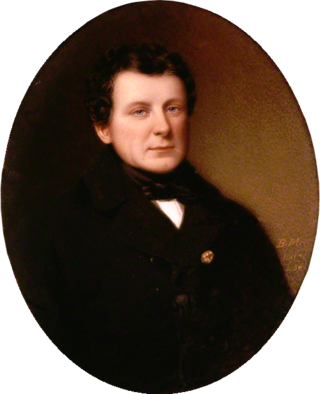 12
Daniel(I) O’Connell, hailed in his time as The Liberator, was the acknowledged political leader of Ireland's Roman Catholic majority in the first half of the 19th century. His mobilisation of...
12
Daniel(I) O’Connell, hailed in his time as The Liberator, was the acknowledged political leader of Ireland's Roman Catholic majority in the first half of the 19th century. His mobilisation of...
Henry Grattan
Mary, mother of Jesus
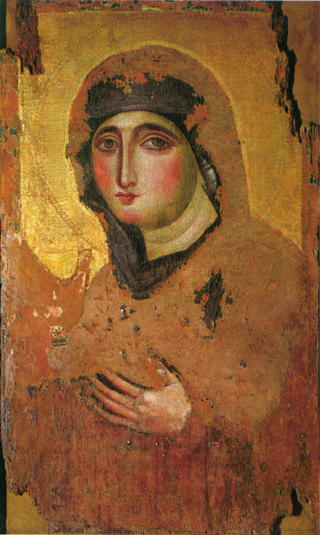 10
Mary was a first-century Jewish woman of Nazareth, the wife of Joseph and the mother of Jesus. She is a central figure of Christianity, venerated under various titles such as virgin or queen, many of...
10
Mary was a first-century Jewish woman of Nazareth, the wife of Joseph and the mother of Jesus. She is a central figure of Christianity, venerated under various titles such as virgin or queen, many of...
Francis of Assisi
 9
Giovanni di Pietro di Bernardone, known as Francis of Assisi, was an Italian mystic, poet and Catholic friar who founded the religious order of the Franciscans. He was inspired to lead a Christian...
9
Giovanni di Pietro di Bernardone, known as Francis of Assisi, was an Italian mystic, poet and Catholic friar who founded the religious order of the Franciscans. He was inspired to lead a Christian...
Wolfe Tone
 8
Theobald Wolfe Tone, posthumously known as Wolfe Tone, was a revolutionary exponent of Irish independence and is an iconic figure in Irish republicanism. Convinced that, so long as his fellow...
8
Theobald Wolfe Tone, posthumously known as Wolfe Tone, was a revolutionary exponent of Irish independence and is an iconic figure in Irish republicanism. Convinced that, so long as his fellow...
Arthur Wellesley, 1st Duke of Wellington
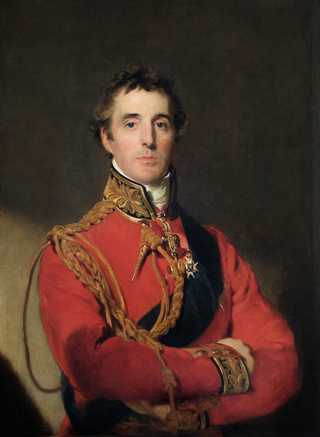 8
Field Marshal Arthur Wellesley, 1st Duke of Wellington, was an Anglo-Irish statesman, soldier, and Tory politician who was one of the leading military and political figures of 19th-century Britain,...
8
Field Marshal Arthur Wellesley, 1st Duke of Wellington, was an Anglo-Irish statesman, soldier, and Tory politician who was one of the leading military and political figures of 19th-century Britain,...
Oliver Plunkett
 7
Oliver Plunkett was the Catholic Archbishop of Armagh and Primate of All Ireland and the last victim of the Popish Plot. He was beatified in 1920 and canonised in 1975, thus becoming the first new...
7
Oliver Plunkett was the Catholic Archbishop of Armagh and Primate of All Ireland and the last victim of the Popish Plot. He was beatified in 1920 and canonised in 1975, thus becoming the first new...
Saint Anne
 7
According to apocrypha, as well as Christian and Islamic tradition, Saint Anne was the mother of Mary, the wife of Joachim and the maternal grandmother of Jesus. Mary's mother is not named in the...
7
According to apocrypha, as well as Christian and Islamic tradition, Saint Anne was the mother of Mary, the wife of Joachim and the maternal grandmother of Jesus. Mary's mother is not named in the...
Charles Kickham
 7
Charles Joseph Kickham was an Irish revolutionary, novelist, poet, journalist and one of the most prominent members of the Irish Republican Brotherhood.
7
Charles Joseph Kickham was an Irish revolutionary, novelist, poet, journalist and one of the most prominent members of the Irish Republican Brotherhood.
Saint Joseph
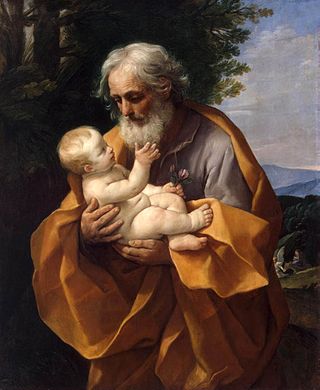 6
Joseph was a 1st-century Jewish man of Nazareth who, according to the canonical Gospels, was married to Mary, the mother of Jesus, and was the legal father of Jesus.
6
Joseph was a 1st-century Jewish man of Nazareth who, according to the canonical Gospels, was married to Mary, the mother of Jesus, and was the legal father of Jesus.
Brigid of Kildare
 6
Saint Brigid of Kildare or Saint Brigid of Ireland is the patroness saint of Ireland, and one of its three national saints along with Patrick and Columba. According to medieval Irish hagiographies,...
6
Saint Brigid of Kildare or Saint Brigid of Ireland is the patroness saint of Ireland, and one of its three national saints along with Patrick and Columba. According to medieval Irish hagiographies,...
John the Apostle
 6
John the Apostle, also known as Saint John the Beloved and, in Eastern Orthodox Christianity, Saint John the Theologian, was one of the Twelve Apostles of Jesus according to the New Testament....
6
John the Apostle, also known as Saint John the Beloved and, in Eastern Orthodox Christianity, Saint John the Theologian, was one of the Twelve Apostles of Jesus according to the New Testament....
Saint Peter
 4
Saint Peter, also known as Peter the Apostle, Simon Peter, Simeon, Simon, or Cephas, was one of the Twelve Apostles of Jesus Christ and one of the first leaders of the early Christian Church. He...
4
Saint Peter, also known as Peter the Apostle, Simon Peter, Simeon, Simon, or Cephas, was one of the Twelve Apostles of Jesus Christ and one of the first leaders of the early Christian Church. He...
Cainnech of Aghaboe
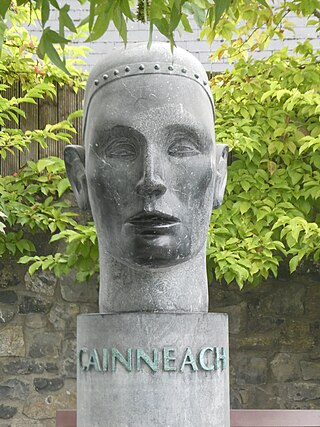 4
Cainnech of Aghaboe (515/16–600), also known as Saint Canice in Ireland, Saint Kenneth in Scotland, Saint Kenny and in Latin Sanctus Canicus, was an Irish abbot, monastic founder, priest and...
4
Cainnech of Aghaboe (515/16–600), also known as Saint Canice in Ireland, Saint Kenneth in Scotland, Saint Kenny and in Latin Sanctus Canicus, was an Irish abbot, monastic founder, priest and...
Michael (archangel)
 4
Michael, also called Saint Michael the Archangel, Archangel Michael and Saint Michael the Taxiarch is an archangel in Judaism, Christianity, Islam, and the Baha'i faith. The earliest surviving...
4
Michael, also called Saint Michael the Archangel, Archangel Michael and Saint Michael the Taxiarch is an archangel in Judaism, Christianity, Islam, and the Baha'i faith. The earliest surviving...
Saint Lawrence
 3
Saint Lawrence or Laurence was one of the seven deacons of the city of Rome under Pope Sixtus II who were martyred in the persecution of the Christians that the Roman Emperor Valerian ordered in 258.
3
Saint Lawrence or Laurence was one of the seven deacons of the city of Rome under Pope Sixtus II who were martyred in the persecution of the Christians that the Roman Emperor Valerian ordered in 258.
Martin of Tours
 3
Martin of Tours, also known as Martin the Merciful, was the third bishop of Tours. He has become one of the most familiar and recognizable Christian saints in France, heralded as the patron saint of...
3
Martin of Tours, also known as Martin the Merciful, was the third bishop of Tours. He has become one of the most familiar and recognizable Christian saints in France, heralded as the patron saint of...
Brendan the Navigator
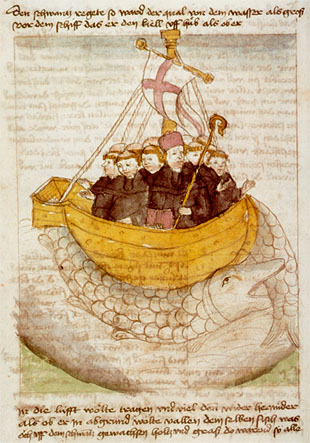 3
Brendan of Clonfert is one of the early Irish monastic saints and one of the Twelve Apostles of Ireland. He is also referred to as Brendan the Navigator, Brendan the Voyager, Brendan the Anchorite,...
3
Brendan of Clonfert is one of the early Irish monastic saints and one of the Twelve Apostles of Ireland. He is also referred to as Brendan the Navigator, Brendan the Voyager, Brendan the Anchorite,...
Winston Churchill
 3
Sir Winston Leonard Spencer Churchill was a British statesman, soldier, and writer who twice served as Prime Minister of the United Kingdom, from 1940 to 1945 during the Second World War, and again...
3
Sir Winston Leonard Spencer Churchill was a British statesman, soldier, and writer who twice served as Prime Minister of the United Kingdom, from 1940 to 1945 during the Second World War, and again...
William Wallace
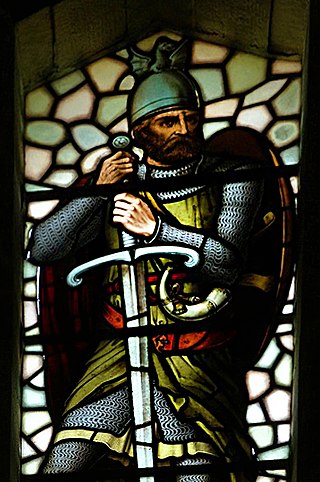 3
Sir William Wallace was a Scottish knight who became one of the main leaders during the First War of Scottish Independence.
3
Sir William Wallace was a Scottish knight who became one of the main leaders during the First War of Scottish Independence.
James Fintan Lalor
 2
James Fintan Lalor was an Irish revolutionary, journalist, and “one of the most powerful writers of his day.” A leading member of the Irish Confederation, he was to play an active part in both the...
2
James Fintan Lalor was an Irish revolutionary, journalist, and “one of the most powerful writers of his day.” A leading member of the Irish Confederation, he was to play an active part in both the...
Fintan of Clonenagh
 2
Fintan of Clonenagh was an Irish hermit and monk. He was an abbot and disciple of Columba of Terryglass.
2
Fintan of Clonenagh was an Irish hermit and monk. He was an abbot and disciple of Columba of Terryglass.
Ignatius of Loyola
 2
Ignatius of Loyola, venerated as Saint Ignatius of Loyola, was a Spanish Catholic priest and theologian, who, with six companions, founded the religious order of the Society of Jesus (Jesuits), and...
2
Ignatius of Loyola, venerated as Saint Ignatius of Loyola, was a Spanish Catholic priest and theologian, who, with six companions, founded the religious order of the Society of Jesus (Jesuits), and...
Michael Collins (Irish leader)
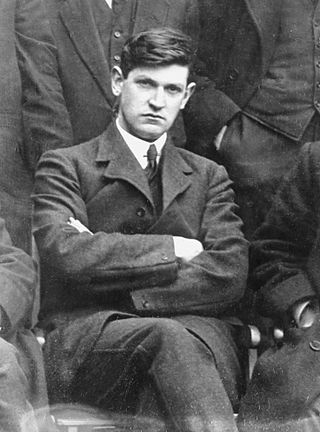 2
Michael Collins was an Irish revolutionary, soldier and politician who was a leading figure in the early-20th century struggle for Irish independence. During the War of Independence he was Director...
2
Michael Collins was an Irish revolutionary, soldier and politician who was a leading figure in the early-20th century struggle for Irish independence. During the War of Independence he was Director...
Finbar of Cork
 2
Saint Finbar, Finbarr, Finnbar, or Finnbarr, in Irish Fionnbharra, very often abbreviated to Barra, was Bishop of Cork and abbot of a monastery in what is now the city of Cork, Ireland. He is patron...
2
Saint Finbar, Finbarr, Finnbar, or Finnbarr, in Irish Fionnbharra, very often abbreviated to Barra, was Bishop of Cork and abbot of a monastery in what is now the city of Cork, Ireland. He is patron...
Charles Bianconi
 2
Charles Bianconi was an Italo-Irish entrepreneur. Sometimes described as the "man who put Ireland on wheels", he developed a network of horse-drawn coaches that became Ireland's "first regular public...
2
Charles Bianconi was an Italo-Irish entrepreneur. Sometimes described as the "man who put Ireland on wheels", he developed a network of horse-drawn coaches that became Ireland's "first regular public...
Brian Boru
 2
Brian Boru was an Irish king who ended the domination of the High Kingship of Ireland by the Uí Néill, and possibly ended Viking invasions of Ireland. Brian Boru was mentioned in Annals of Inisfallen...
2
Brian Boru was an Irish king who ended the domination of the High Kingship of Ireland by the Uí Néill, and possibly ended Viking invasions of Ireland. Brian Boru was mentioned in Annals of Inisfallen...
Ronan of Locronan
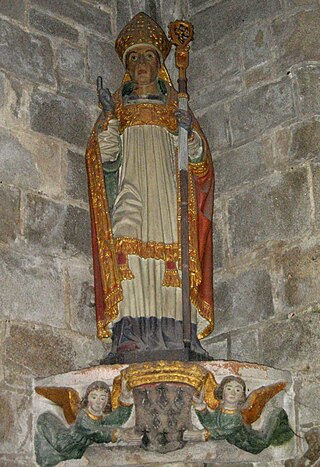 2
Saint Ronan was an Irish pilgrim saint and hermit in western Brittany. He was a son of Saint Berach and the eponymous founder of Locronan and co-patron of Quimper (France), together with its founder,...
2
Saint Ronan was an Irish pilgrim saint and hermit in western Brittany. He was a son of Saint Berach and the eponymous founder of Locronan and co-patron of Quimper (France), together with its founder,...
William Dargan
 2
William Dargan MRDS was arguably the most important Irish engineer of the 19th century and certainly the most important figure in railway construction. Dargan designed and built Ireland's first...
2
William Dargan MRDS was arguably the most important Irish engineer of the 19th century and certainly the most important figure in railway construction. Dargan designed and built Ireland's first...
Helena, mother of Constantine I
 2
Flavia Julia Helena, also known as Helena of Constantinople and in Christianity as Saint Helena, was an Augusta of the Roman Empire and mother of Emperor Constantine the Great. She was born in the...
2
Flavia Julia Helena, also known as Helena of Constantinople and in Christianity as Saint Helena, was an Augusta of the Roman Empire and mother of Emperor Constantine the Great. She was born in the...
Michael Davitt
 2
Michael Davitt was an Irish republican activist for a variety of causes, especially Home Rule and land reform. Following an eviction when he was four years old, Davitt's family migrated to England....
2
Michael Davitt was an Irish republican activist for a variety of causes, especially Home Rule and land reform. Following an eviction when he was four years old, Davitt's family migrated to England....
John the Baptist
 2
John the Baptist was a Jewish preacher active in the area of the Jordan River in the early 1st century AD. He is also known as Saint John the Forerunner in Eastern Orthodoxy, John the Immerser in...
2
John the Baptist was a Jewish preacher active in the area of the Jordan River in the early 1st century AD. He is also known as Saint John the Forerunner in Eastern Orthodoxy, John the Immerser in...
Crónán of Roscrea
 2
Saint Crónán was the abbot-bishop and patron of the diocese of Roscrea, Ireland. He should not be confused with his contemporary Saint Crónán Mochua.
2
Saint Crónán was the abbot-bishop and patron of the diocese of Roscrea, Ireland. He should not be confused with his contemporary Saint Crónán Mochua.
Jeremiah O'Donovan Rossa
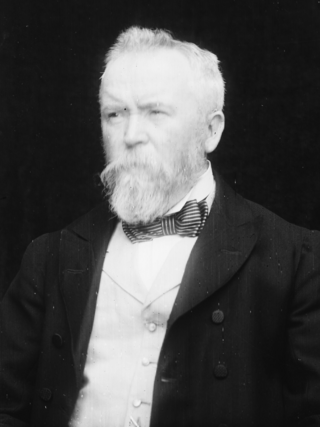 2
Jeremiah O'Donovan Rossa was an Irish Fenian leader and member of the Irish Republican Brotherhood.
2
Jeremiah O'Donovan Rossa was an Irish Fenian leader and member of the Irish Republican Brotherhood.
Ezra
 2
Ezra or Esdras, also called Ezra the Scribe in Chazalic literature and Ezra the Priest, was an important Jewish scribe (sofer) and priest (kohen) in the early Second Temple period. In Greco-Latin...
2
Ezra or Esdras, also called Ezra the Scribe in Chazalic literature and Ezra the Priest, was an important Jewish scribe (sofer) and priest (kohen) in the early Second Temple period. In Greco-Latin...
Catherine of Alexandria
 2
Catherine of Alexandria, also spelled Katherine is, according to tradition, a Christian saint and virgin, who was martyred in the early fourth century at the hands of the emperor Maxentius. According...
2
Catherine of Alexandria, also spelled Katherine is, according to tradition, a Christian saint and virgin, who was martyred in the early fourth century at the hands of the emperor Maxentius. According...